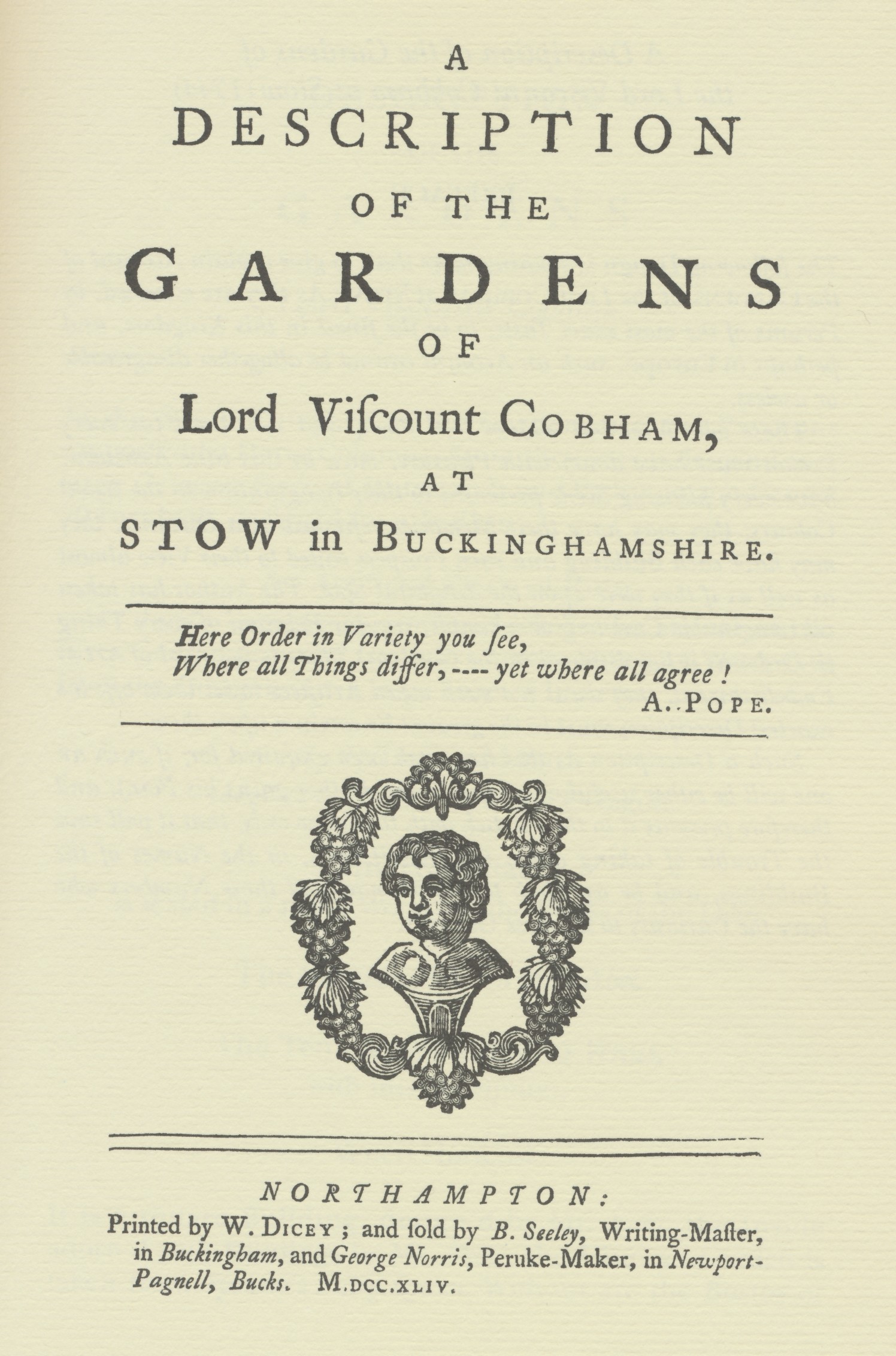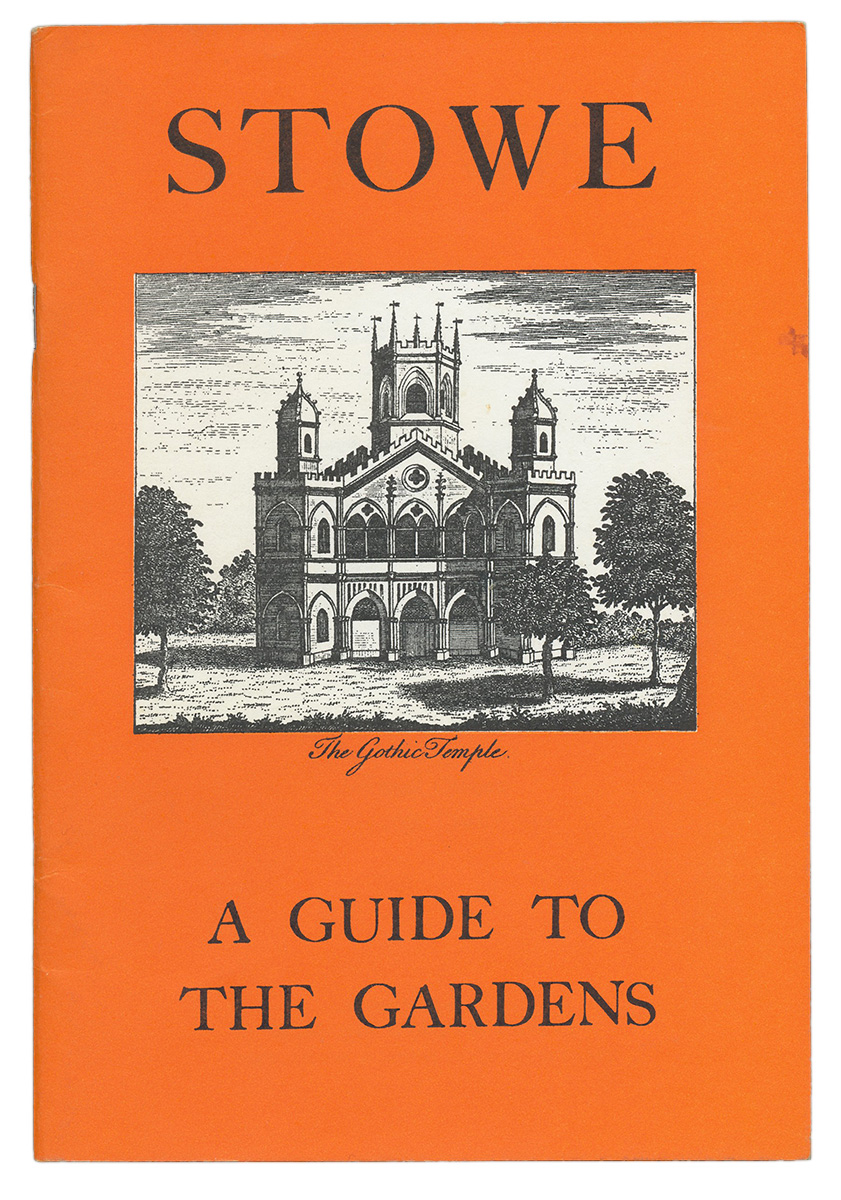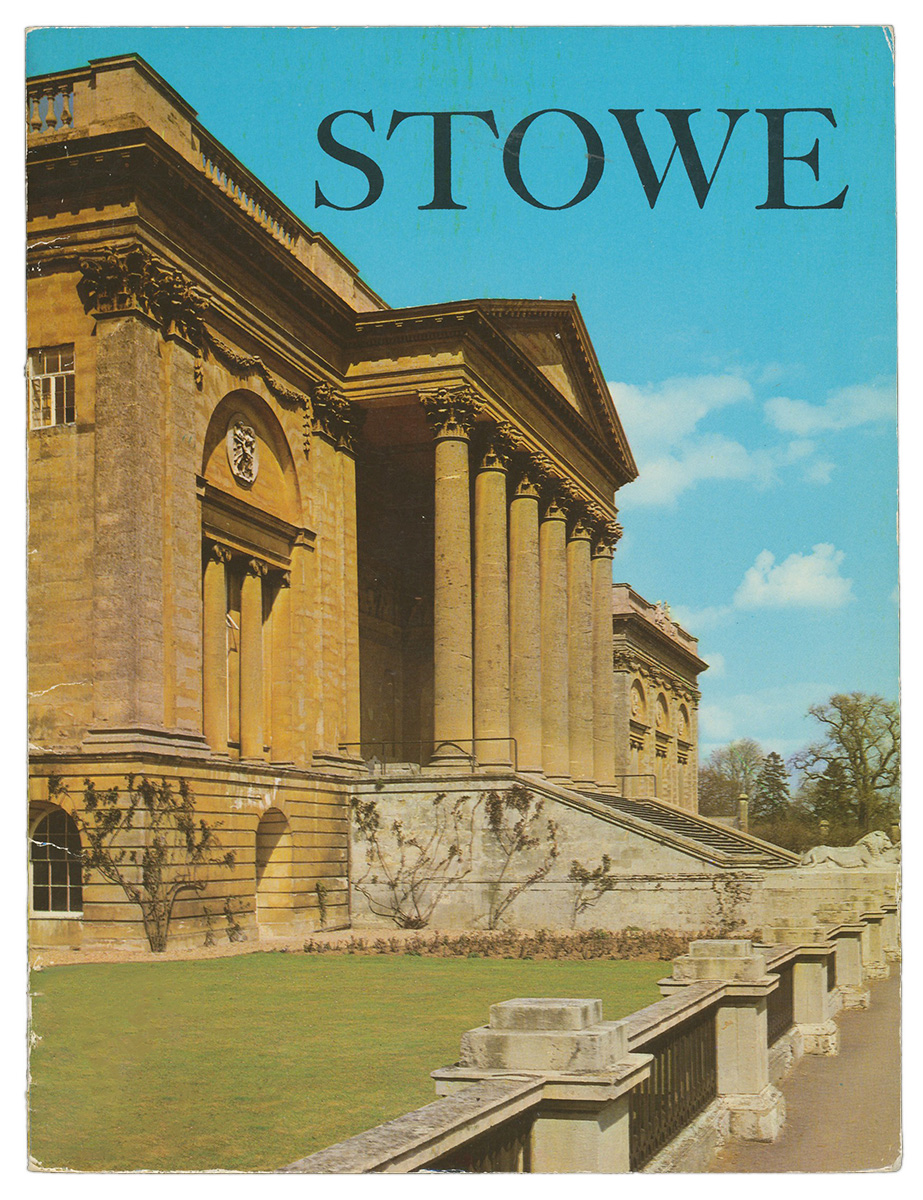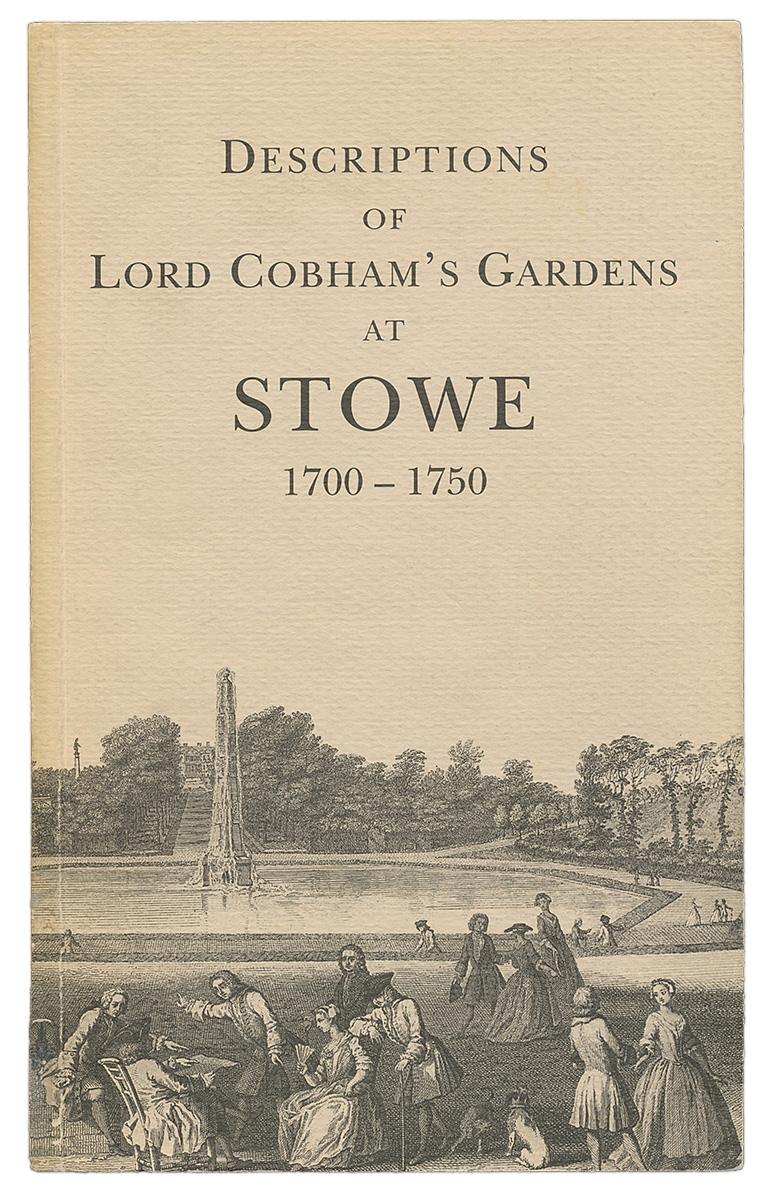Dr Marion Harney takes an historical tour of the famous gardens at Stowe.
Traditions of husbandry, garden making and landscape design have always held a poignant place in the English psyche and garden visiting historically, as now, was an important cultural pursuit. The English Landscape tradition has been described as our greatest contribution to the arts and the cultural, historic and social importance of historic parks and gardens has exerted great influence in other cultures too.
The gardens at Stowe have always been open to the public, indeed Lord Cobham specifically constructed the New Inn to the south of the grounds in 1717 as the first purpose-built tourist inn to accommodate eighteenth-century visitors. Stowe was also one of the first places to have formal visitor arrangements such as set opening times and literature describing the house and gardens.

Benton Seeley, a local bookseller and engraver published A Description of the Gardens of the Lord Viscount Cobham at Stow (1744), the first official comprehensive guide published for a country seat in England, available some 20 years before similar publications for comparable places such as the much visited Leasowes (1764), Lord Lyttleton’s Hagley (1777) and Blenheim Palace which was not published until 1787. Largely based on Daniel Defoe and Samuel Richardson’s 1742 edition of A tour thro’ the Whole Island of Great Britain Seeley’s guide was periodically revised and reprinted going through 50 editions between 1744-97.

Sold at New Inn, Buckingham, and in London the basic guide cost sixpence, a shilling if it included a plan, and five shillings for the ‘deluxe edition bound, with a series of views’. The bulk of Seeley’s book describes the gardens with several views of the monuments, temples and by 1760, over 30 different garden buildings, and in some editions measured plans of them. The first in an exceptionally long tradition of guides to Stowe it created a model for other later site-specific guidebooks.

The gardens at Stowe were highly influential and Seeley’s guidebook helped to spread their influence throughout the eighteenth century as the ideal model for the English garden inspiring other landowners to implement changes to their own grounds. In the year Seeley’s guide was published Elizabeth Montague described Stowe’s gardens as ‘beyond description, it gives the best idea of Paradise that can be.’ The influence of Stowe spread far beyond the British Isles and it is known that the third American President, Thomas Jefferson, owned at least two of Seeley’s guidebooks, and visited the gardens with John Adams (second American President) in 1786, guidebook in hand. Seeley’s now historically significant guide books were a source for Catherine the Great’s Park at Tsarskoe Selo, Saint Petersburg and helped to make the extensive landscape at Stowe the most publicized and copied of English landscape garden models. Despite rival publications Seeley’s guides prevailed and were regularly refined and updated to include maps, remaining in publication until 1827. They are an indispensable research resource for architectural and landscape historians and conservation practitioners as they record and document the multiple changes and additions to the buildings and landscape at Stowe from the early eighteenth century through to the beginning of the nineteenth century.
Further resources
Gardens and Landscapes in Historic Building Conservation, M. Harney (2014).
The Polite Tourist, A. Tinniswood, 1989.
